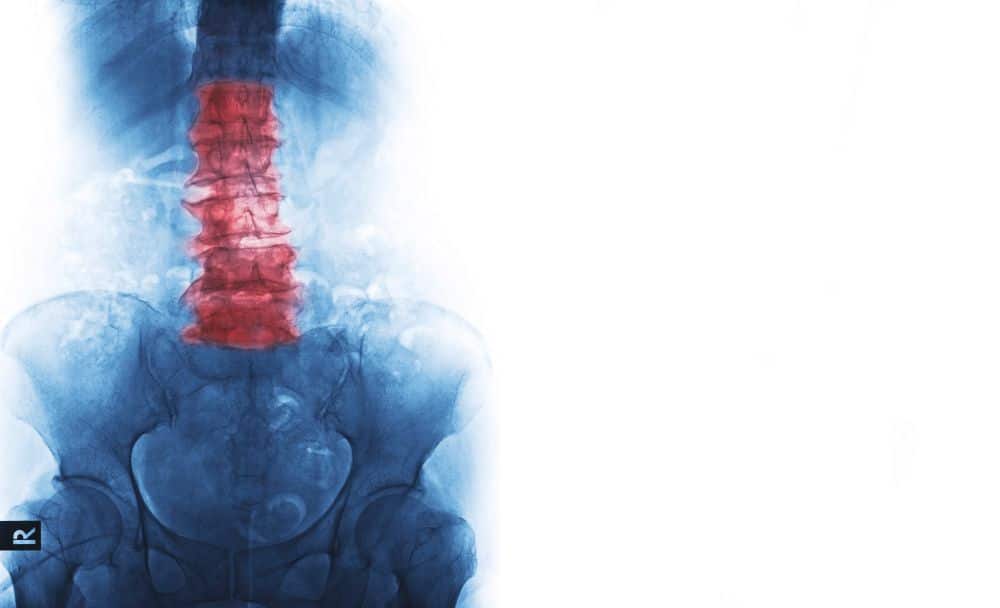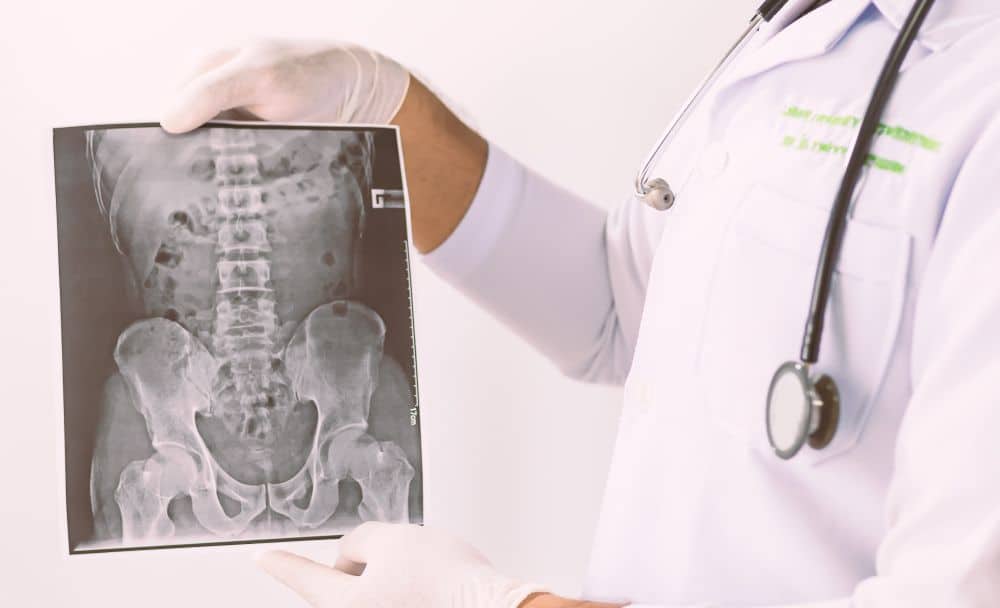
Ankylosing spondylitis (AS) is a chronic and agonizing inflammatory condition primarily affecting the spine and sacroiliac joints. It is classified as a type of spondyloarthritis, a group of diseases marked by inflammation of the joints and ligaments. Ankylosing spondylitis can lead to the fusion of the vertebrae, resulting in stiffness, pain, and reduced mobility. [1] Understanding the nature of Ankylosing spondylitis, its symptoms, causes, and available spondylitis treatment options is essential for individuals affected by the disease and for healthcare professionals involved in its management. This article offers a comprehensive overview of the subject and tells you about the ankylosing spondylitis meaning, ankylosing spondylitis symptoms, causes, and available ankylosing spondylitis treatment.
What is Ankylosing Spondylitis?
Ankylosing spondylitis meaning stands for a complex disease that is potentially debilitating with an insidious start and which slowly progresses to radiological sacroiliitis over a few years. Patients manifesting symptoms of this condition face various issues, including low productivity at work and a substantial reduction in the overall quality of life. [2] The most common features of this disease are chronic back pain and progressive spinal stiffness, and it primarily affects the axial skeleton, which includes the spine and sacroiliac joints. [3]
What are the symptoms of Ankylosing Spondylitis?

The Ankylosing spondylitis symptoms can vary from person to person, but some common manifestations include:
a) Persistent lower back pain and progressive back stiffness are among the most common spondylitis symptoms.
b) Pain and stiffness in the buttocks and hips are also Ankylosing spondylitis symptoms. [3]
c) Other Ankylosing spondylitis symptoms include weight loss and loss of appetite.
d) Fatigue and reduced physical activity due to pain and stiffness are yet other Ankylosing spondylitis symptoms.
e) In severe cases, spondylitis symptoms may include changes in vision and eye pain due to uveitis, which is eye inflammation. [4]
What are Ankylosing Spondylitis causes?
What exactly leads to Ankylosing spondylitis is still unknown, but it is held to be a combination of various environmental and genetic factors. The strongest genetic association is with the HLA-B27 gene, which is present in most individuals with AS. However, not all individuals with the HLA-B27 gene develop the condition, indicating the involvement of other factors. Environmental triggers such as infections may also play a role in the development of AS. [4]
How can Ankylosing Spondylitis be diagnosed?

Diagnosing Ankylosing spondylitis can be challenging, as its symptoms can be similar to the symptoms of other conditions such as mechanical low back pain, Lumbar spinal stenosis, Rheumatoid arthritis, and diffuse idiopathic skeletal hyperostosis (DISH). A comprehensive evaluation and ankylosing spondylitis xray by a rheumatologist is essential to rule out the differences through medical history, physical examination, and diagnostic tests. [3]
Ankylosing spondylitis and Non-radiographic axial spondyloarthritis:
When the condition is found on X-ray, it is called ankylosing spondylitis, When the condition can’t be seen on X-ray but is found based on symptoms, blood tests and other imaging tests, it is called nonradiographic axial spondyloarthritis.
How can Ankylosing Spondylitis be treated?
While there is currently no major ankylosing spondylitis treatment, several cure options are available to manage ankylosing spondylitis symptoms and slow down the progression of the disease. Ankylosing spondylitis treatment aims to alleviate pain, reduce inflammation, preserve mobility, and improve the overall quality of life. [1]
Treatment approaches may include:
Medications:
Non-steroidal anti-inflammatory drugs (NSAIDs) are commonly prescribed to reduce pain and inflammation. TNF-alpha inhibitors (TNFis) and additional ankylosing spondylitis treatments like biological therapies and methotrexate, and sulfasalazine that target specific inflammatory pathways may be used in more severe cases. [1]
Physical Therapy:
Specific ankylosing spondylitis exercises and stretches can help improve posture, maintain flexibility, and strengthen the muscles supporting the spine. Physical therapy also focuses on pain relief and overall fitness and is considered a common ankylosing spondylitis treatment. [3]
Lifestyle Modifications:
Regular physical activity, ankylosing spondylitis exercises, maintaining good posture, and using appropriate ergonomic techniques can help manage ankylosing spondylitis symptoms. Quitting smoking is crucial, as it can worsen the disease. [3]
Ayurvedic treatment approaches:
These may also include Panchakarma, Guggulu and Rasoushadhies.
Surgical Interventions:
In rare cases, surgery may be necessary to correct severe deformities or joint damage caused by AS such as adult patients suffering severe kyphosis or advanced hip arthritis. Corrective osteotomy and stabilization or even total hip replacement may be considered as ankylosing spondylitis treatment. [1]
Complications
In severe ankylosing spondylitis, new bone forms as part of the body’s attempt to heal. This new bone gradually bridges the gap between vertebrae and eventually fuses sections of vertebrae. Those parts of the spine become stiff and inflexible. Fusion also can stiffen the rib cage, restricting lung capacity and function.
FAQs
What are the most common spondylitis symptoms females?
The most common spondylitis symptoms females include pain in the spine, lower back, neck, and hips, pain in ankles and knees, anemia, stiffness after rest or sleep, and fatigue, among others.
What are the best Ayurvedic cervical spondylitis treatment?
Some of the best Ayurvedic cervical spondylitis treatments include:
Triphala: Triphala taken with a glass of milk can help with spondylitis treatment
Guggul: Simbananda Guggulu, the resin extract of the Guggulu plant, is believed to be an effective Ayurveda medicine for spondylitis treatment
Kumari Saar: Popularly known as Aloe Vera, the juice of this plant helps with spondylitis treatment
Is ankylosing spondylitis a serious issue?
Yes, it is. The condition can lead to the fusing of spinal vertebrae, making one’s spine rigid, inflexible, and stiff over time.
Conclusion
Ankylosing spondylitis is a debilitating condition affecting your backbone or spine. While there is no cure, various spondylitis treatment options, including medications, physical therapy, lifestyle modifications, and surgery, can alleviate the symptoms and improve the overall quality of life for individuals with ankylosing spondylitis. Early diagnosis and appropriate management are crucial for minimizing the impact of the disease and maintaining optimal functionality and well-being. Learning about the disease and its management can provide emotional support and valuable information to cope with ankylosing spondylitis. Through this article, we have tried to go deep into the spondylitis meaning, the various spondylitis symptoms, and ankylosing spondylitis treatment options.
Disclaimer:
This article is written from a health and wellness perspective and is not medical advice. Kindly seek the help of a certified medical practitioner before initiating any treatment.

















